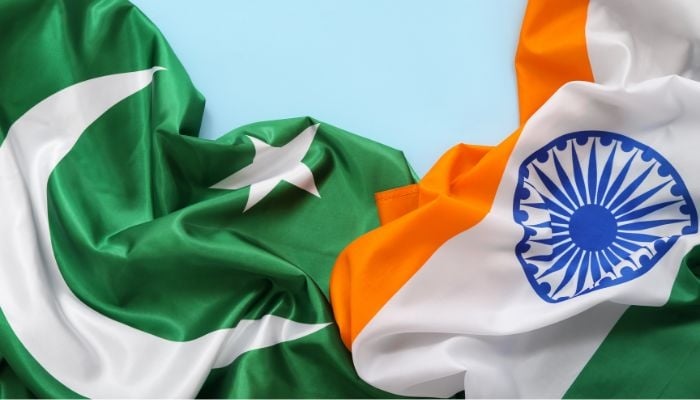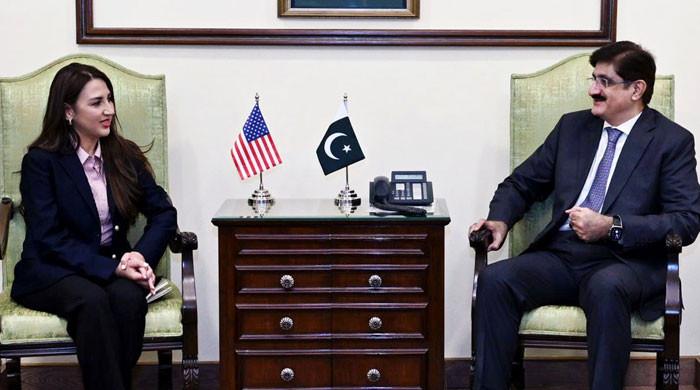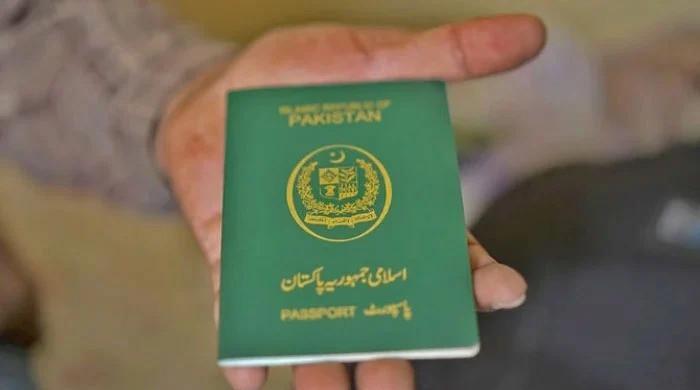Pakistan-India ties in the backdrop of deals and agreements
Geo.tv takes a look at some of major agreements signed between the two countries since 1947
April 25, 2025

Ties between Pakistan and India, since Partition, have been marked by ups and downs. From bilateral cooperation to escalating conflicts, both countries have witnessed fluctuations in various domains including diplomacy, culture, politics and trade, among others. Owing to the contentious relationship between the two nations, bilateral deals and agreements have also undergone a similar pattern.
Following the recent deadly attack on Indian tourists in Pahalgam, a scenic valley located in the Illegally Indian Occupied Jammu and Kashmir, on April 22, the country’s central government in New Delhi resorted to accusations targeting Pakistan for involvement in the violence, without any proof. Alongside various other reactionary steps, the Indian government went on to suspend the decades-old Indus Waters Treaty as well.
In retribution, Pakistan, too, has warned India of placing all bilateral deals and agreements in abeyance, particularly the Shimla Agreement. Islamabad has since announced to shut the Wagah border and also suspend all trade with the eastern neighbour, among other measures.
In light of recent events in the backdrop of India and Pakistan ties, Geo.tv takes a look at some of the major agreements signed between the two countries since 1947.
Nehru and Liaquat sign agreement in 1950
In April 1950, Pakistani prime minister Liaquat Ali Khan and Jawaharlal Nehru forged an agreement during a meeting in the Indian capital New Delhi that laid out a consensus to safeguard the rights and interests of minorities in their respective countries. As per the agreement, both governments were to be mutually accountable to ensure protection to minority communities. Guarantee to receive equal employment opportunities sans discrimination, freedom of movement and establishing a commission for minorities to monitor the implementation of the pact were among its key provisions. This pact was struck following Partition, a time that witnessed hundreds of thousands of lives sacrificed in the wake of deadly violence on both sides of the border.
Indus Waters Treaty
Facilitated by the World Bank, the Indus Waters Treaty was signed between the two nations on September 19, 1960, outlining the rights and responsibilities of India and Pakistan regarding the usage of the Indus River system flowing in both countries. The agreement saw its realisation following six years of dialogue and was officially signed by Pakistan’s then-president Ayub Khan and India's prime minister Nehru.
As per the agreement, Pakistan obtained control over the water of the western rivers of Indus, Jhelum, and Chenab, while India retained its rights over those on the eastern side, Ravi, Beas, and Sutlej. Provisions related to the development of water infrastructure, such as canals, barrages, dams and tube wells, were also part of the treaty, which also included the construction of Mangla and Tarbela dams. It also mandated the formation of a Permanent Indus Commission with one representative commissioner from each country to ensure cooperation as well as resolution of potential disputes.
The treaty remained in force until India’s recent decision to suspend it after nearly 65 years.
Shimla agreement
During the Ayub Khan era, the Shimla agreement was signed between Pakistan and India with former Pakistani prime minister Zulfikar Ali Bhutto and Indira Gandhi marking the historic event as signatories. The Shimla agreement, also known as the Shimla Accord, steered both countries clear from taking any kind of unilateral action against the other to ensure that all conflicts will be resolved through bilateral dialogues. Following the agreement, the existing ceasefire line was converted into the Line of Control (LoC).
The agreement also laid out points regarding the Kashmir issue, emphasizing that the “the basic issues and causes of conflict which have bedevilled the relations between the two countries for the last 25 years shall be resolved by peaceful means”. It also expressed commitment to engage in dialogue to ensure lasting peace and normalization of ties.
Religious visits
Both Pakistan and India, in 1974, agreed upon a protocol to facilitate religious pilgrimage in both countries, allowing their respective devotees to visit religious and sacred sites. As per the agreement, 15 sites in Pakistan and five in India were opened for pilgrims as of 2018.
The sites includes Sindh’s Shadani Darbar in Hyat Pitafi, Chakwal’s Katasraj Dham, the Gurudwara Panja Sahib and the Gurudwaras of Nankana Sahib. In India, prominent religious destinations include Nizamuddin Dargah, tomb of Amir Khusro, and Ajmer Sharif Dargah.
Agreement to prohibit attacks on nuclear installations and facilities
On December 13, 1988, the neighbouring countries signed an agreement that required both India and Pakistan to, every year, exchange information about each other’s nuclear facilities and installations on January 1. It also obligated both nations to steer clear of any direct or indirect action against one another that could lead to damage or destruction of their nuclear assets. Officially, as per the Foreign Office, the pact came into effect on January 22, 1991.
Prevention of airspace violations
This deal was signed in New Delhi by the two nations on April 6, 1991, and was aimed at minimising the risk of airspace violations, whether unintentional or accidental. With the help of specific guidelines for military aircraft, it mentioned maintaining a 10-kilometre distance from each other’s air territories including the one within the Air Defence Identification Zone.
It also ensured that no aircraft would enter each other airspace above their respective territorial waters without authorisation.
Lahore declaration
The Lahore declaration was agreed upon in February 1999 when former Indian premier Atal Bihari Vajpayee visited Pakistan and formalized the agreement with his counterpart Nawaz Sharif. The agreement was to affirm that an atmosphere of security and peace is created in the mutual interest of both countries. And also acknowledged the resolution of outstanding issues including the Kashmir issue. the two nations pledged to intensify efforts to address all issues through a comprehensive and focused negotiations.
The process, however, faced a hurdle during the Kargil war later that year, but resumed in 2004 during the ear of former military ruler General Pervez Musharraf.
Agreement on prior notification of ballistic missile flight tests
The two countries, in 2005, signed a deal binding each other to give at least three days of notice before going ahead with a flight test of surface-to-surface ballistic missiles on land or sea. It also specified that the location of the launch of these missiles should not be closer than 40km from the Line of Control or International Boundary. While it also mentioned that the impact zone aimed by the missile should not be closer than 75km from these borders for both sides conducting the tests.
Reducing risks of accidents related to nuclear weapons
An agreement to reduce the risks of accidents related to nuclear weapons took effect on February 21, 2007, but it initially lasted for only five years. Under this deal, both Pakistan and India promised to enhance the safety and security of their nuclear assets, notifying one another in case of a nuclear accident, while also taking measures to reduce the radiological effects of such incidents. The agreement was later extended for another five years in both 2012 and 2017.
LOC ceasefire deal
The two rival nations, in November 2003, signed an agreement to ensure a ceasefire along the Working Boundary and LOC. While the former divides the two countries, the latter serves as the de facto border separating the Indian occupied Kashmir from Pakistan.
Frequent violations, however, were recorded starting in 2008 after several years of ceasefire. After Indian premier Narendra Modi’s rule in 2014, the number of violations notably increased. Both countries in 2021 reiterated their resolve to the agreement to continue ceasefire.











